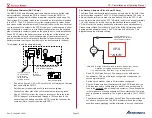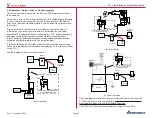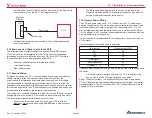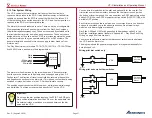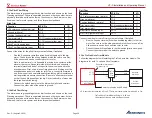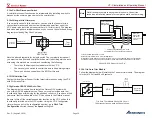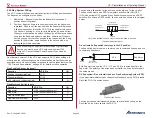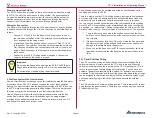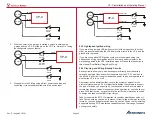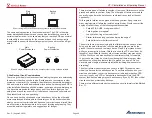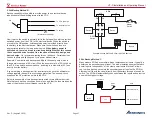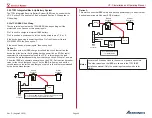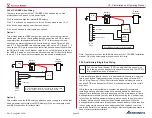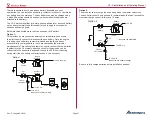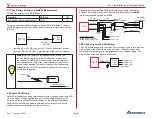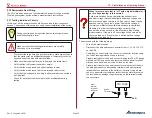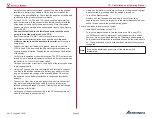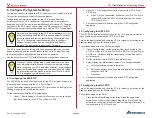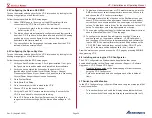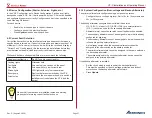
Page 46
VP-X Installation and Operating Manual
Rev. D (August 5, 2020)
Main
EFIS
Backup
EFIS
Even if a single EFIS fails, the overall system is very safe and reliable.
The same analogy applies to the electrical system. The VP-X is the main
power distribution mechanism and you can also install backup circuits for
certain critical avionics. In the same way that your backup EFIS has minimal
functionality to ensure safety for the mission at hand, the backup circuits
are selected to support the essential equipment you need to continue flight
safely.
Main
Power Distribution
Backup
Power Distribution
OFF
ON
Circuit Breaker
5A
BACKUP
Even if a single component fails, the overall system is very safe and reliable.
5.24a Backup Circuit Considerations
There is a great deal of subjective decision making that goes into determining
the number of backup circuits to wire. Backups are not uncommon in other
systems on the aircraft. For example, the old vacuum-drive attitude indicator
had an electric turn and bank instrument for backup. A modern glass EFIS is
often installed with backup altitude, attitude, and airspeed round-dial gauges.
You have two magnetos for redundancy, and if one fails in flight you can
safely land at a nearby airport. But, if one fails on the ground you would not
likely takeoff with only one operating.
On one hand, backup circuits add more redundancy, but on the other add
more complexity and failure points. Ultimately, you as the builder should do
what you are most comfortable with based on your mission and aircraft. Here
we will provide a few data points to help in your thinking and planning. They
are not absolute or regulatory, only suggestions for thought.
There are two types of failures to consider. One type of failure occurs on the
ground and prevents you from flying. The other type of failure occurs while
you are flying and may be harmless or could require you land at the next
opportunity.
With regard to failures on the ground that keep you from flying: there are
many single-points of failure that exist on aircraft today. Would you start the
engine or take off if any of the following conditions existed:
• Failed EFIS, AHRS, or engine monitor?
• Failed ignition or magneto?
• Leaky brake o-ring or tire inner tube?
• Starter failure causing you to hand-prop the engine?
• Failed alternator or battery contactor?
The point is there are many single points of failure that can keep you from
flying, and the safest thing to do is fix the problem while you are on the
ground. It’s common sense to always have a Plan B if your plane breaks
while you are away from home. With that in mind, the VP-X should not be
thought of any differently than any other component that may ground you
if it fails. While you can wire backups for the alternator field, for example,
to get you home, it may be overkill considering that there are many other
components on the plane that are likely to ground you as well. Do you
have two sets of engine instruments installed, including dual sensors for
everything?
The other failure mode occurs when you are in flight. Perhaps the most
critical is a backup for the attitude source. The others will depend on your
mission and whether you carry a backup comm radio and/or backup GPS
receiver. If you fly only VFR or have battery backups built into the EFIS
system, then backup wiring may not be necessary. If you fly IFR, then critical
circuits should be protected by backups.
There are two different methods to wire backup circuits (simply called Method
B or C).

